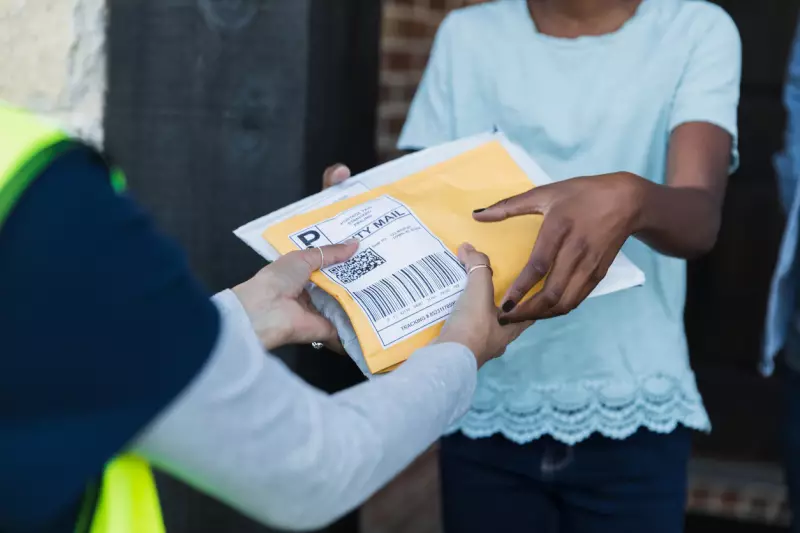What You Need to Know About Fake USPS Tracking Number
Table of Contents
- By Greg Brown
- Published: Dec 12, 2022
- Last Updated: Dec 13, 2022

Packages and letters sent to others through commercial postal services such as the United States Postal Service can now be tracked using an 8 to 40-digit code. Package tracking has been around for thousands of years, with the first attempt being fire and smoke signals.
Electronic tracking began in the early nineties and has become an efficient yet complex process. Early on, drivers would enter tracking numbers by keypad until barcodes were introduced and the pertinent information was easily scanned.
Tracking numbers now offer the recipient a host of valuable information. The unique ID or code is attached at shipment; it helps with time-sensitive parcels and eliminates much of the confusion for shippers. Most services use the S10 (UPU Standard) 13-character identifier.
What to Know About Fake Tracking Numbers
As with most other scams and malware, fake USPS tracking numbers are rising. Most USPS tracking numbers consist of 20 to 22 digits, beginning with the number 9. International tracking numbers are different in length and complexity.
Scam artists use fake USPS tracking numbers to fool online consumers; during the holidays, criminals tend to make a fortune. Delivery phishing scams are rampant, and consumers must be aware of the danger.
Smishing
Smishing fraudsters pose as genuine USPS senders and circulate thousands of emails and texts at a time containing a fraudulent tracking number and a phishing link. The fake USPS links take the consumer to phishing websites where they must enter personal information to expedite their shipment. Links may also lead to fake survey pages to claim a reward.
In most smishing attacks, scammers do their best to pose as government agencies or financial institutions. The attack aims to receive as much personally identifiable information from the consumer as possible.
Learn to Spot a Fake Tracking Number Communication
Consumers and businesses of all sizes are relentlessly attacked with every type of scam imaginable. Scammers use texts, emails, and phone calls to initiate their assaults. There are commonalities between each form of communication.
- Do you receive texts and phone calls from unknown numbers? Marketing messages come from five-digit numbers; however, USPS scams come from ten-digit personal phone numbers.
- Is there a lack of information, and do the tracking numbers match? Make sure all numbers are the same as the confirmation email. Every tracking number is unique; if unsure, search the internet with the number given; if nothing comes up, the number is fake.
- Look out for different words and numbers in the tracking number.
- The communication is fake if the text or email you receive alludes to a settlement amount or payment to release a package, usually between one to five dollars.
Consumers have become so complacent to online scams criminals do not even need to provide a working tracking number. The customer looks at the confirmation with a passing eye, and if everything looks normal, the tracking number is never questioned. Consumers become concerned with prior communications until the package never arrives, and by that time, scammers are long gone.
Holidays
At this time of the year, there is always a dramatic rise in online scams and package delivery crimes. Amazon and Apple are the two most impersonated brands worldwide, and their security systems work overtime during the holidays. As an example of the widespread problems: An elderly Ohio man felt his Amazon account was in danger when he received fraudulent information. He immediately called the number given to him by the scammer. The consumer did as he was told and opened a new Amazon account attached to his bank account. Within hours the man’s account was drained of $124,000.
Do Not Fall for Fake Tracking Numbers

- Shop online at reputable stores only. If there is a lack of contact information at the bottom of the website, contact the store before placing your order. If you are still concerned about the store’s validity, check with local BBB reviews.
- Verify tracking numbers immediately after purchase. Plug the number into the USPS tracking number database to verify its validity.
- USPS allows the consumer to preview mail and packages. The Informed Delivery service gives the customer photos of the arriving package and delivery time. Knowing when your mail will arrive forces the customer to become more vigilant.
- Sign-up for the USPS Electronic Signature service and add another security layer. Shippers cannot deliver insured packages valued at more than $500 without your signature.
- Block spam messages from your text and email inbox immediately. Malware may have already been downloaded to your phone or computer.
- Add delivery instructions to any package or mail you ship. This added security ensures the package is delivered to your exact location. Scammers can never access this information.
- Report missing mail immediately; USPS will send confirmations and periodic updates. The postal service can also inform you if a package is legitimate.
Protect Your Business During the Holidays
- Think before you reply to any suspicious text or email. Is it valid communication? Does it have a valid tracking number? Establish policies with employees who ship and receive packages for the company. Confirm everything.
- Do not reply if you feel the communication is fake. Designate specific employees to answer phone calls and receive emails and texts.
- Scammers can use expired but valid tracking numbers used in past purchases. Make sure the number matches your confirmation. Never throw away packages with shipping labels attached. Criminals can simply go through a company’s trash can periodically and do irreparable harm during the holidays. Make sure employees never share the tracking number. Criminals can reroute the package to another address with your valid tracking number.
- Post any fraudulent communication and tracking numbers to the government at ftc.com/complaint.
Final Word
Online tracking number verification, barcodes, and shipping labels have been a boon to small eCommerce companies that need every advantage to succeed. Scammers are doing their best to prey on any unsuspecting consumer or business, no matter the age or sentiment of the parcel.
Common sense is the key to keeping your information secure. As mentioned earlier, think before opening any unsuspecting mail or package. Do not let scammers ruin the holidays for you and your family.
















